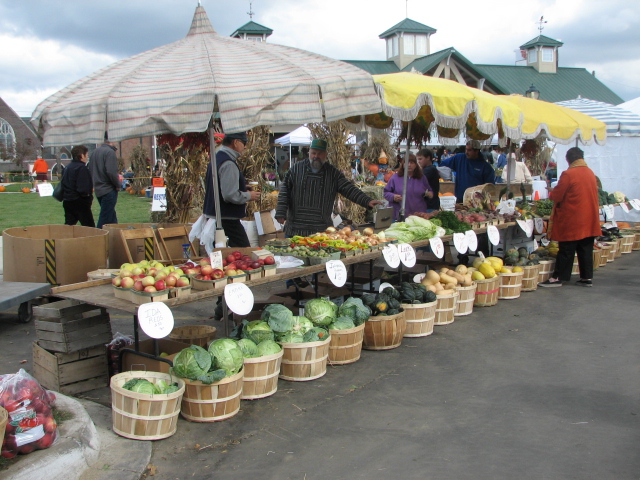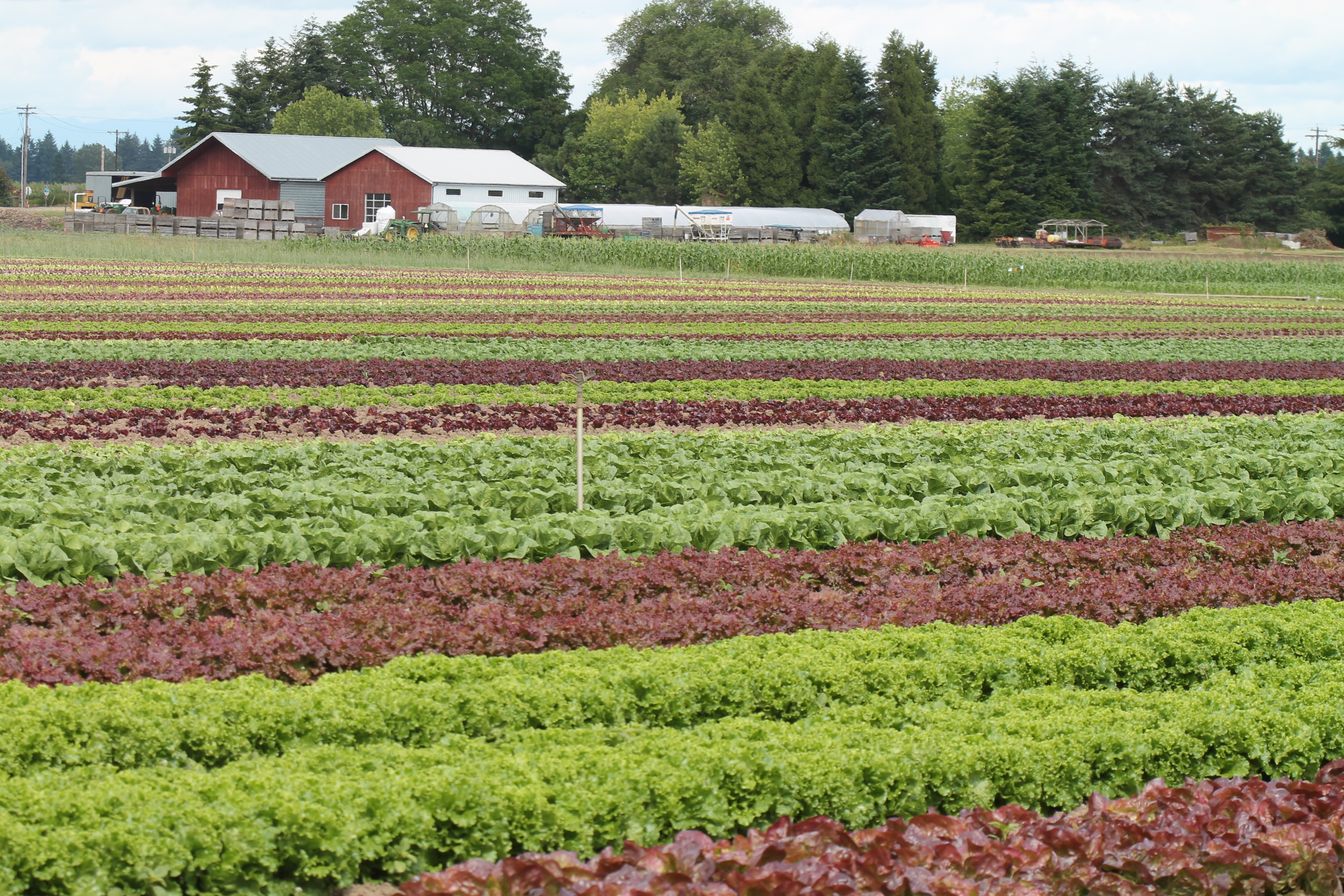|
Farmers Market Promotion Program
The Farmers Market Promotion Program is a United States Department of Agriculture (USDA) program established by the 2002 farm bill (P.L. 107–171, Sec. 10605) to improve or expand existing farmers' markets, roadside stands, community-supported agriculture programs, and other direct producer-to-consumer market opportunities, and to develop or aid in the development of new farmers’ markets, etc. The farm bill authorized unspecified amounts of appropriations for FY2002 through FY2007 for this program. It was continued by the 2008 farm bill The Food, Conservation, and Energy Act of 2008 (, also known as the 2008 U.S. Farm Bill) was a $288 billion, five-year agricultural policy bill that was passed into law by the United States Congress on June 18, 2008. The bill was a continuatio .... References {{CRS, article = Report for Congress: Agriculture: A Glossary of Terms, Programs, and Laws, 2005 Edition, url = https://web.archive.org/web/20110810044532/http://ncseonline.org/nle/cr ... [...More Info...] [...Related Items...] OR: [Wikipedia] [Google] [Baidu] |
United States Department Of Agriculture
The United States Department of Agriculture (USDA) is an executive department of the United States federal government that aims to meet the needs of commercial farming and livestock food production, promotes agricultural trade and production, works to assure food safety, protects natural resources, fosters rural communities and works to end hunger in the United States and internationally. It is headed by the secretary of agriculture, who reports directly to the president of the United States and is a member of the president's Cabinet. The current secretary is Brooke Rollins, who has served since February 13, 2025. Approximately 71% of the USDA's $213 billion budget goes towards nutrition assistance programs administered by the Food and Nutrition Service (FNS). The largest component of the FNS budget is the Supplemental Nutrition Assistance Program (formerly known as the 'Food Stamp' program), which is the cornerstone of USDA's nutrition assistance. The United Stat ... [...More Info...] [...Related Items...] OR: [Wikipedia] [Google] [Baidu] |
2002 Farm Bill
The Farm Security and Rural Investment Act of 2002, also known as the 2002 Farm Bill, includes ten titles, addressing a great variety of issues related to agriculture, ecology, energy, trade, and nutrition. This act has been superseded by the 2007 U.S. Farm Bill. The act directs approximately 16.5 billion dollars of funding toward agricultural subsidies each year. These subsidies have a dramatic effect on the production of grains, oilseeds, and upland cotton. The specialized nature of the farm bill, as well as the size and timing of the bill, made its passage highly contentious. Debated in the U.S. House of Representatives during the immediate aftermath of the September 11th attacks in 2001, the bill drew criticism from the White House and was nearly amended. The amendment, which failed by a close margin, was proposed by Rep. Ron Kind (D-WI) and would have shifted money away from grain subsidies to conservation measures. Public debate over the farm bill continued, and the ... [...More Info...] [...Related Items...] OR: [Wikipedia] [Google] [Baidu] |
Farmers' Market
A farmers' market (or farmers market according to the AP stylebook, also farmer's market in the Cambridge Dictionary) is a physical retail marketplace intended to sell foods directly by farmers to consumers. Farmers' markets may be indoors or outdoors and typically consist of booths, tables or stands where farmers sell their produce, live animals and plants, and sometimes prepared foods and beverages. Farmers' markets exist in many countries worldwide and reflect the local culture and economy. The size of the market may be just a few stalls or it may be as large as several city blocks. Due to their nature, they tend to be less rigidly regulated than retail produce shops. They are distinguished from public markets, which are generally housed in permanent structures, open year-round, and offer a variety of non-farmer/non-producer vendors, packaged foods and non-food products. History The current concept of a farmers' market is similar to past concepts, but different in relati ... [...More Info...] [...Related Items...] OR: [Wikipedia] [Google] [Baidu] |
Roadside Stand
Street food is food sold by a hawker or vendor on a street or at another public place, such as a market, fair, or park. It is often sold from a portable food booth, food cart, or food truck and is meant for immediate consumption. Some street foods are regional, but many have spread beyond their regions of origin. Most street foods are classified as both finger food and fast food, and are generally cheaper than restaurant meals. The types of street food vary between regions and cultures in different countries around the world. According to a 2007 study from the Food and Agriculture Organization, 2.5 billion people eat street food every day. While some cultures consider it to be rude to walk on the street while eating, a majority of middle- to high-income consumers rely on the quick access and affordability of street food for daily nutrition and job opportunities, particularly in developing countries. Today governments and other organizations are increasingly concerned with bo ... [...More Info...] [...Related Items...] OR: [Wikipedia] [Google] [Baidu] |
Community-supported Agriculture
Community-supported agriculture (CSA model) or cropsharing is a system that connects producers and consumers within the food system closer by allowing the consumer to subscribe to the harvest of a certain farm or group of farms. It is an alternative socioeconomic model of agriculture and food distribution that allows the producer and consumer to share the risks of farming. The model is a subcategory of civic agriculture that has an overarching goal of strengthening a sense of community through local markets. Community-supported agriculture can be considered as a practice of Commoning. It is an example of community-led management of the production and distribution of goods and services. The organization of food provisioning through commoning is complementary to the horizontal axis of market mediated food provisioning and the verticality of the state distribution and regulation on food. As a model where market agents do not interact solely as competitors but as “members of a c ... [...More Info...] [...Related Items...] OR: [Wikipedia] [Google] [Baidu] |
Food, Conservation, And Energy Act Of 2008
The Food, Conservation, and Energy Act of 2008 (, also known as the 2008 U.S. Farm Bill) was a $288 billion, five-year agricultural policy bill that was passed into law by the United States Congress on June 18, 2008. The bill was a continuation of the 2002 Farm Bill. It continues the United States' long history of agricultural subsidies as well as pursuing areas such as energy, conservation, nutrition, and rural development. Some specific initiatives in the bill include increases in Food Stamp benefits, increased support for the production of cellulosic ethanol, and money for the research of pests, diseases and other agricultural problems. On January 1, 2013, Congress passed the American Taxpayer Relief Act of 2012 to avert the fiscal cliff and the next day President Barack Obama signed the Act into law. (Public Law No: 112-240) The "fiscal cliff" deal was primarily enacted to avoid automatic tax hikes and spending cuts, but also included provisions extending portions of the 20 ... [...More Info...] [...Related Items...] OR: [Wikipedia] [Google] [Baidu] |



